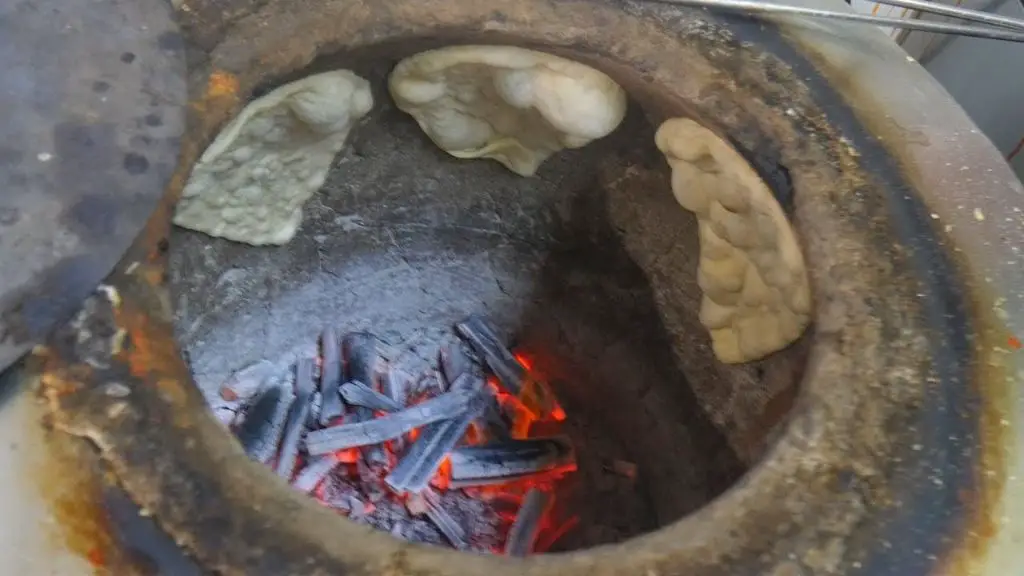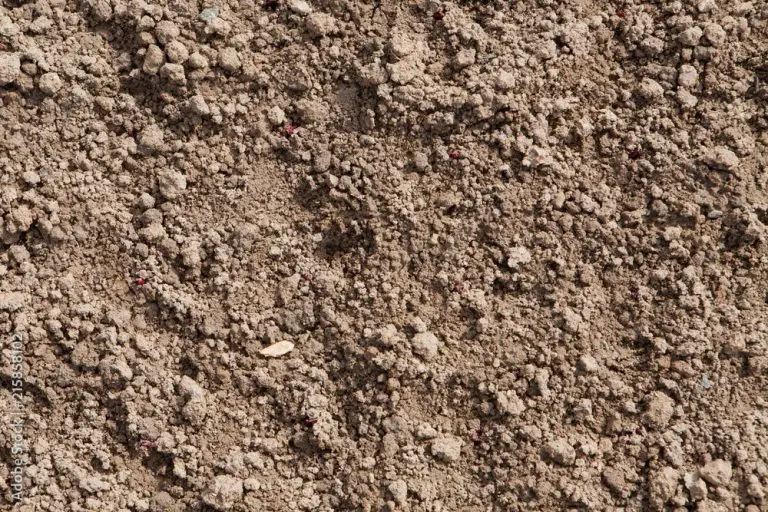What Is The Indian Name For Clay Oven?
A tandoor is a type of clay oven traditionally used in India, Pakistan, Afghanistan, Iran, Central Asia, and the Middle East for cooking and baking. The word “tandoor” itself comes from Persian/Urdu, but the oven likely originated in the ancient Indus Valley civilization around 3000 BC. These cylindrical clay or metal ovens are fired by charcoal or wood to reach high temperatures for baking flatbreads like naan directly on the walls of the oven. Tandoors are known for imparting a distinct smoky flavor and texture to food. They are commonly used in Indian cuisine to make popular dishes like tandoori chicken.
Origin and History
The origins of the tandoor can be traced back around 5000 years ago to the ancient Indus Valley civilization in India, one of the world’s oldest known civilizations
(https://en.wikipedia.org/wiki/Tandoor)
. Tandoor ovens were found during excavations of Indus Valley sites, indicating they were likely used for cooking food in ancient times. The tandoor oven originated as a cylindrical clay or stone oven used predominantly in India, Pakistan, and Afghanistan. It was traditionally dug into the earth and fired with wood or charcoal reaching high temperatures for cooking meats and breads (https://www.linkedin.com/pulse/origin-tandoor-hpg-consulting). From its origins in ancient India, Pakistan and Afghanistan, tandoor ovens spread in popularity and use to Central and West Asia, the Middle East, and eventually around the world.
Types of Tandoors
Tandoors come in various styles and designs depending on the region and culture. According to Mainratraders.com, there are four main types of tandoor ovens used around the world: https://www.mainratraders.com/certified-tandoor/4-types-of-tandoor-ovens/
The traditional Indian tandoor is perhaps the most well known. It is made of clay and has a cylindrical shape. These are embedded into the ground or built into kitchen floors. The Indian tandoor reaches high temperatures which cooks food quickly while adding a smoky flavor.
The Afghan tandoor or tannur is portable and can be moved around. It is still made of clay but has a beehive shape. Middle Eastern cultures use a similar portable tandoor often made from a metal barrel. These clay or metal portable tandoors retain heat effectively for outdoor cooking.
Modern Western versions are made from a variety of materials like stainless steel or cast iron. Some are electric rather than wood burning. These contemporary tandoors allow the oven to be installed in kitchen cabinets or on countertops.
Tandoor Cooking
Tandoor cooking refers to the method of cooking food in a tandoor, which is a type of cylindrical clay oven originating from the Indian subcontinent. The unique shape and high heat of the tandoor allow for quick cooking and a smoky, charred flavor (“What Exactly Is Tandoori Cooking?”).
Unlike conventional ovens, the tandoor is heated by a wood or charcoal fire at the bottom of the cylinder. Temperatures can reach up to 480°C (900°F), which is significantly hotter than a standard oven. The intense heat quickly sears the exterior of foods placed inside while cooking them through. Meat and vegetables cooked in a tandoor develop a characteristic char while retaining moisture inside.
To cook in a tandoor, food is skewered on long metal rods which allow it to be suspended vertically within the oven. Common items cooked in a tandoor include meats, seafood, vegetables, breads like naan, and cheese preparations like paneer tikka. Marinating foods in spiced yogurt also adds signature tandoori flavor. The direct exposure to live fire and radiant heat gives tandoor cooking its unique smoky aroma and texture.
Common Tandoor Dishes
Some of the most popular foods cooked in the tandoor oven include:
Naan – Naan is a leavened flatbread that is stuck to the hot walls of the tandoor to cook. It puffs up and develops char marks, creating a smoky flavor. Plain naan is most common, but there are many variations like garlic naan, cheese naan, and keema naan stuffed with spiced lamb.[1]
Tandoori Chicken – This dish originated at the Moti Mahal restaurant in Delhi in the 1940s. Chicken pieces are marinated in yogurt, spices, and Kashmiri red chili powder to give them a fiery red color. The chicken is then cooked in the intense heat of the tandoor, resulting in juicy and smoky meat with a charred exterior.[2]
Tikka – Tikka refers to small pieces of meat, vegetables, or paneer that are marinated and cooked on skewers in the tandoor. Popular tikka dishes include chicken tikka, paneer tikka, and tandoori fish tikka. The high heat helps seal in flavors and impart a smoky essence.[3]
Other common tandoor dishes are seekh kabab, aloo tikki, and tandoori prawns. The tandoor’s dry heat and smoking allow for quick cooking while enhancing flavor and texture.
[1] https://www.mainratraders.com/tandoor/8-most-loved-tandoori-dishes-in-india/
[2] https://spicecravings.com/tandoori-recipes
[3] https://food.ndtv.com/food-drinks/9-most-popular-tandoori-dishes-across-india-try-them-now-2461570
Tandoor in Indian Culture
The tandoor oven plays an integral role in Indian cuisine and cultural events. It is considered an iconic symbol of India’s culinary heritage (Tale of The Tandoor: A Cultural Symbol of Culinary Heritage). Tandoori cooking is a distinctive Indian style of cooking meat and vegetables over high heat in a tandoor.
Tandoori chicken is one of the most popular Indian dishes cooked in the tandoor. Marinated chicken pieces are threaded onto skewers and cooked at high temperatures in the clay oven, resulting in a charred exterior and moist, flavorful interior (Tandoor). Other common tandoor dishes include tandoori fish, shrimp, paneer, and naan bread.

The tandoor is ubiquitous at celebrations and festivals across India. At weddings, tandoori dishes are a traditional part of the feast. Tandoors may be set up for outdoor community gatherings, with people gathered around to watch the pitmasters at work. The sights, sounds and aromas of tandoori cooking evoke an authentic Indian cultural experience (Second to naan: what the Tandoor means to Indian cuisine).
Variations Outside India
The tandoor has spread around the world along with the popularity of Indian cuisine. Many regional styles and innovations have emerged. In the Middle East, tandoors are commonly used for cooking breads like naan, as well as kebabs and tandoori chicken. Tandoori chicken was invented and popularized by restaurateur Kundan Lal Gujral in Peshawar, Pakistan during the 1940s, bringing the dish international fame [1]. In Turkey, the tandoor oven is known as tandir and used for cooking breads and meats. Central Asian cuisine also uses tandoor ovens extensively.
In China, the tandoor is called a huo kao and often used for Peking duck and other dishes. Across South Asia, tandoor ovens have been adapted to local ingredients and tastes – from tandoori fish in Bangladesh to chili chicken in Malaysia. Even in the West, tandoor ovens have been widely adopted by Indian restaurants and fused into Western cuisine. Pizza cooked in a tandoor oven has become popular, as has tandoori-style chicken and naan bread.
Tandoor Construction
Tandoors are traditionally made from clay and constructed by hand. The basic design is a cylindrical clay oven with an opening at the top and bottom. To build a traditional tandoor oven, the following materials are required:
- Clay – Usually a mix of red clay and fire/heat-resistant clay
- Sand – Added to the clay mixture
- Straw – Mixed into the clay for stability and insulation
- Wire or mesh – Used to reinforce the shape
When designing a tandoor, key considerations include the thickness of the clay walls, chimney design, and mechanisms for adjusting airflow. The walls should be thick enough to retain heat but thin enough to quickly transmit that heat to the food inside. The opening at the bottom allows air circulation to control cooking temperature. The chimney releases smoke and regulates air draft through the tandoor.
To construct a tandoor, first the clay mixture is wedged and kneaded to remove air pockets. It is then molded by hand over a temporary earthen, wooden, or metal mold. Once molded, it is allowed to dry completely. Next, insulation material may be added around the outside. After drying and insulating, it is ready to be fired at high temperatures in a furnace or open pit to harden it into a strong, heat-resistant ceramic.
More modern tandoors may use refractory cement or incorporate electric heating elements. However, traditional clay tandoors remain prized for their authentic cooking performance.
Source: https://www.instructables.com/Building-a-Tandoor-From-Scratch/
Tandoor Safety
Tandoors can reach extremely high temperatures, so there are some safety precautions to take when using them.
Potential risks include burns, fires, and carbon monoxide poisoning if used indoors without proper ventilation.
Here are some tips for using tandoors safely:
- Always keep children and pets away from the tandoor when in use.
- Wear heat-resistant mitts or gloves when handling the tandoor or removing food.
- Ensure proper ventilation if using indoors – tandoors consume a lot of oxygen and release carbon monoxide.
- Place on a non-flammable surface away from walls, curtains or other flammable objects.
- Allow tandoor to cool fully before touching or moving it.
- Inspect for gas leaks if using gas-fired tandoor.
- Keep a fire extinguisher nearby.
- Follow manufacturer instructions for safe usage and maintenance.
With proper precautions, tandoors can be used safely for delicious cooking.
Sources:
https://www.munnilal.com/blog/how-can-safety-and-maintenance-of-tandoor/
https://luxury-tandoors.com/safety-tips/
Conclusion
The tandoor is an important part of Indian cuisine and culture. It consists of a cylindrical clay or metal oven used for cooking meats, vegetables, and breads at high temperatures. The word “tandoor” itself comes from the Persian word “tannur” meaning oven or fire.
Tandoors allow for flavorful charring and smoking of foods. Common dishes cooked in the tandoor include tandoori chicken, naan bread, and tikkas. Although originating in India, variations of the tandoor oven are now found across the world from Turkey to China to Brazil.
Key points to remember are that tandoors provide very high heat cooking which results in characteristic charring and smoking. Traditional tandoors are made from clay but other materials are now used too. Tandoor cooking is an iconic part of Indian cuisine with certain characteristic dishes that have become popular globally. While evolving over time, the tandoor remains an important cultural tradition and cooking method in Indian and South Asian food culture.


